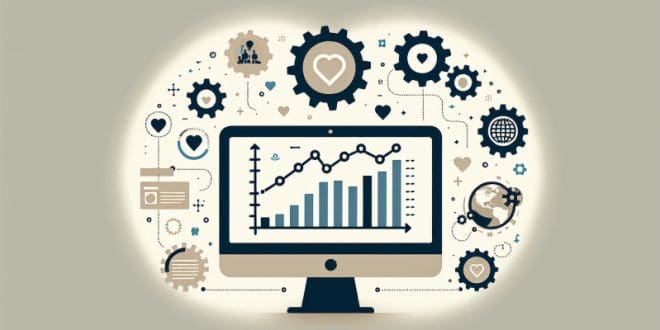In today’s fast-paced philanthropic landscape, nonprofits navigate an ever-shifting sea of funding opportunities and donor interests. As competition for grants intensifies and the demand for transparency and accountability rises, nonprofit organizations are increasingly turning to predictive analytics to steer their course towards sustainable growth and success.
Predictive analytics, at its core, is the use of historical data, statistical algorithms, and machine learning techniques to identify the likelihood of future outcomes. This innovative approach to decision-making is not the exclusive domain of for-profit corporations; it’s a potent tool for the nonprofit sector, one that can substantially impact strategic planning and operational efficacy.
**Forecasting Philanthropic Trends**
The philanthropy world is subject to trends and shifts influenced by global events, economic climates, and changing donor priorities. By analyzing past giving patterns, economic indicators, and social signals, predictive analytics allows nonprofits to anticipate future fundraising trends. Organizations can use this insight to adjust their focus, align their messaging with emerging donor interests, and prepare for funding cycles, ensuring they remain relevant and effective.
**Identifying Potential Funding Sources**
Locating and securing grants is a task that requires precision and foresight. Predictive analytics can reveal patterns in funding source behavior, enabling nonprofits to target their proposals more effectively. By understanding which projects and initiatives have historically received support, organizations can tailor their efforts to match the preferences of grant-giving bodies, thus increasing their chances of success.
**Evaluating Grant Impact**
Long-term grant outcomes are pivotal in securing recurring funding and demonstrating accountability to stakeholders. Nonprofits can use predictive analytics to measure and predict the impact of their work. By tracking indicators aligned with their mission, they can not only report on past successes but also model the potential effects of future initiatives. This capability supports more compelling storytelling and strengthens the case for investment in their programs.
**Leveraging Analytical Tools**
Nonprofit professionals must embrace a data-driven culture to harness the power of predictive analytics effectively. This involves investing in the right tools, fostering staff skills in data analysis, and cultivating partnerships that can provide expertise and support. Whether through in-house analytics teams or collaborations with academic institutions, the strategic use of data can empower nonprofits to make evidence-based decisions, optimize resource allocation, and amplify their impact.
In conclusion, predictive analytics is more than a buzzword; it’s a transformative resource that can help nonprofits navigate the complexities of the philanthropic world with confidence and precision. By understanding and applying the insights gained from data, the nonprofit sector can enhance its strategies, secure sustainable funding, and continue its vital work with greater efficacy.
As organizations look towards the future, those who invest in the capabilities of predictive analytics will find themselves at the forefront of innovation and impact. It’s not merely about surviving in a competitive arena; it’s about thriving in a way that honors the mission and values at the heart of the philanthropic community.
 Grants Club Community
Grants Club Community







